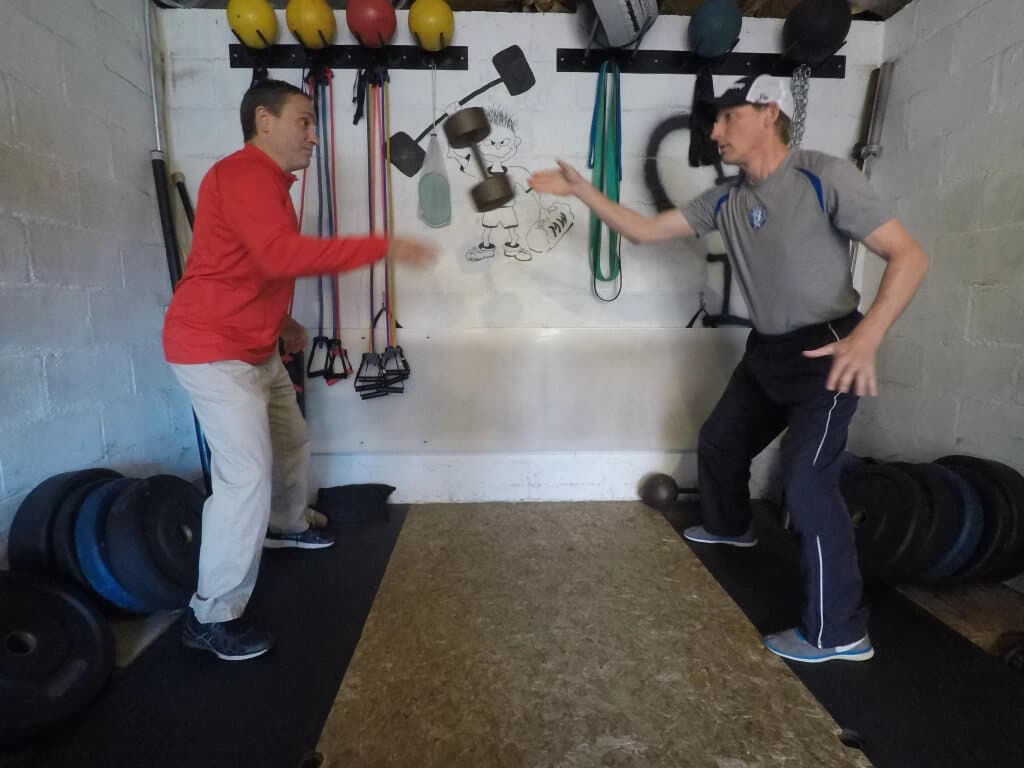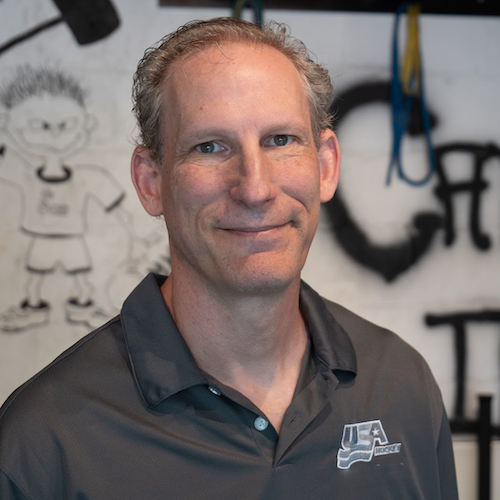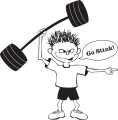Even Peter Pan gets shin splints

Originally published in South Coast Today.
Through the years I’ve been asked to donate training sessions as a raffle item for various fundraisers. I enjoy chipping in for a good cause, especially when contributing time rather than writing a check.
One annual event has such a great grand prize (dinner for two anywhere in the world) that I just had to take a stab at it myself, fantasizing about the thrill of winning the thing. I of course didn’t win, and to add insult to injury, I won a workout with myself.
I so infrequently win anything, I figured what the hell, I may as well take advantage of the disappointing stroke of luck. So I trained myself and did a terrible job at that and learned that he who trains himself has a fool for a client.
When it comes to other people my advice is spot on, but when it comes to myself, all of my wisdom and experience goes out the window. Subjectivity clouds my judgment and that does not make for good decision-making.
We see others more clearly than we see ourselves; we’re at our deluded best when looking at ourselves.
Perception is reality may work in politics, but this adage does not hold true in a weight room. I have the mindset of my 25-year-old self with the middle-aged body of my 39-and-holding self, a dangerous combination.
Make decisions with your brain, not your heart’s desire or knee-jerk impulses.
Accepting one’s chronological age is one thing, but proving that I’m not that old is quite another.
My signature, ill-advised, go-to move is trying to snatch an 85-pound dumbbell without warming up. Because, if it goes well, I have a fleeting moment of thinking that I’ve still got it. My orthopedist would say this is the conduct of a feeble-minded has-been with misplaced vanity. My couch doctor would say that proving that you’re not losing it is a losing battle that sets you up for humiliation. And they’re both right. Do what’s best for your body, not what’s best for your ego.
You always hurt the one you love and vice versa. Is it that we love things that aren’t good for us or do we just overindulge in things that we love? Whether ordering that second deep-fried oreo or running with no knee cartilage, things that seem like a good idea at the time don’t always work out so great.
To the weightlifters with bulging discs and the swimmers with crippling shoulder pain: Try something else.
I’m not saying quit, but at least offset the damage by balancing your routine with less-harmful movements. You don’t want your primary form of exercise to be a mechanism of injury.
Every exercise has its own uniquenesses that impact the body in different ways. The more typical concerns usually deal with the orthopedic ramifications of an exercise. We can generalize in terms of what’s high impact and what’s low impact or which body positions are on the safe side and which ones are higher risk, but this is a far cry from crystal-ball conclusions about which exercises will be disagreeable with which people. Know your restrictions and find out which exercises might be less appropriate for your body’s particulars.
Human bodies are like snowflakes in that no two are alike. Everyday we see a wide variety of people’s lengths and proportions. Some people have flat feet while others have high arches; some people are symmetrical while others are asymmetrical.
Proper joint function and biomechanics are often considered based on the skeletons that hang in a doctor’s office. These underweight exhibitionists don’t have to contend with loose tendons, curvature of the spine, or the like.
Few of us have the precise body of the archetypal illustrations of the physiology textbooks.
Abnormal structural characteristics are often associated with poor or unorthodox mechanics. The end result may be a muscle working overtime, subjection to disproportionate forces causing undue stress on a joint, several other problems, or no injury at all. Even if you are blessed with perfect alignments and the rest, you cannot discount the imperfect world in which we live.
Running in bad shoes, weightlifting in an uneven basement, and so forth can bring about some unforeseen physical consequences.
Listen to your body.
Despite our poor judgment and lack of common sense, we’re pretty good at figuring out when something is bad for our body.
Legendary ski bum/filmmaker Warren Miller has a great line that I use all the time: Anyone who says, “I’m skiing better now at 50 then I was at 25,” wasn’t a very good skier when they were 25.
There are plenty of sofa spuds that discover fitness later in life and can technically claim that they’re in the best shape of their life at 50 years old. But that only holds true because they were slackers during their period of greatest physical potential. They’re not better than they would have been had they worked out during their prime years.
With the human body it’s both the age and the mileage. As George Bernard Shaw once said: Peak physical condition is wasted on the young. https://6430b74d37ce3d08b01c81b4e79abe61.safeframe.googlesyndication.com/safeframe/1-0-37/html/container.html
But we can all be great for our age and our demographic station in life. We can improve at any age whether or not we’re at our physical best. The consensus among all of the great older lifters who I’ve been around is: Never stop working out and don’t get injured. Karl Norberg benched 400 pounds when he was 70 years old.
Maximizing your potential and avoiding injury is all about smart, sensible decision making when it comes to your own exercise needs and goals. Exercise is an individual case-by-case balancing act. A workout for a high school freshman should not look like that of a collegiate athlete. I would never tell anyone to act their age but
I would suggest to train for your age. Maybe not your chronological age but at least whatever age your body thinks it is.
People of advanced years can exhibit great levels of fitness and high levels of performance, but let’s not forget that it’s a relative sort of thing. The ageless wonders and the physical specimens who are past their prime are good role models who give the rest of us a fighting chance.
Trying to recapture your youth is a losing proposition, but to be youthful, active and durable is a worthy goal. The fountain of youth is fool’s gold, but to be a mighty grey-haired warrior is within reach. We don’t all have a personal trainer or strength coach to guide us so be smart, thoughtful, reasonable and sound … in other words don’t act like you did when you were 18!

Norm Meltzer aka The Muscle-less Wonder
